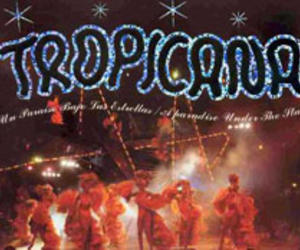Tropicana, an example of Cubanhood
- Submitted by: manso
- Travel and Tourism
- 03 / 12 / 2011

2011.03.11 / radiorebelde. / Tropicana, an example of Cubanhood. Havana, Cuba. - By 1949, Fernando Ortiz’s research works on the formation and profile of Cuban national being had already bequeathed us fundamental texts. That’s when he reached the conclusion that we also needed “something ineffable to wrap up “the Cubanhood of the nation’s birth, coexistence and even of its culture.” That “something” has nothing to do with ethnographic characterizations. It is exactly what defines Cubanhood.
So he wrote: “Full-fledged Cuban identity doesn't just consist of being Cuban because of any environmental contingency that surrounds individual personality and shapes its features. It also requires the awareness of being Cuban and the will to be it.”
The living legend of Tropicana is deep-rooted in this thought. It is one of the most famous tourist facilities in the world.
Moreover, it is a cultural space where Cuban identity and Cubanhood complement each other for the benefit of our identity.
It opened on December 31 1939, in the lands of “Villa Mina” country estate. Its uniqueness and natural atmosphere - inspiration for the ensuing “Paradise under the stars” have earned undisputable worldwide success as time went by.
The genesis of its name is ascribed to its first orchestra's director, Alfredo Brito. He wrote the song “Tropicana”, prelude and epilogue of its fabulous shows and its most emblematic attribute. Nevertheless, it was Roderico Neyra (Rodney), one of the best Cuban choreographers ever, who took this magnificent space to its pinnacle. Other prestigious directors, like Joaquin Condall, Amaury Perez, Tomas Morales and Santiago Alfonso have carried on and enriched this creative work.
Music halls like “Congo Panther”, a milestone in the 40’s; “The jolly widow”, “Spring in Rome” and “Six pretty Cubans”, in the 50’s, brought utmost success to the already dazzling artistic enclosure. They were followed by other hits, like “Romans were like this”, “Lecuona’s Carnival”, “Tropicana sings and dances for you”, “A toast to Tropicana”, “You are the glory”, until the current proposal of “Drums in concert.”
Master Tomas Morales conceived the latest show starting from a percussion instrument fundamental for our culture: the drum.
Along with it, he proposes, in distinct indulgence of rhythm, dance and color, a tour across the most famous Cuban rhythms: rumba, mambo, cha-cha-cha and guaguanco. Everything unfolds under aboriginal influence and the African-Hispanic legacy. In addition, a collateral show features skating and circus art scenes.
Tropicana stages have seen perform the crème de la crème of international show business … Nat King Cole, Josephine Baker, Carmen Miranda, Liberace, “Los Chavales de España”, Alejandra Guzman, Pedro Vargas, Cheo Feliciano… When it comes to national stars, let us just recall Rita Montaner, Armando Romeu, Adolfo Guzman, Bola de Nieve, Celia Cruz, Benny More, Olga Guillot, Rosita Fornes, Maria de los Angeles Santana, Leticia Herrera, Elena Burque, Omara Portuondo, Los Van Van, Los Papines and so many others. (By: Astrid Barnet). Translated by: Pedro A. Fanego.
Comments